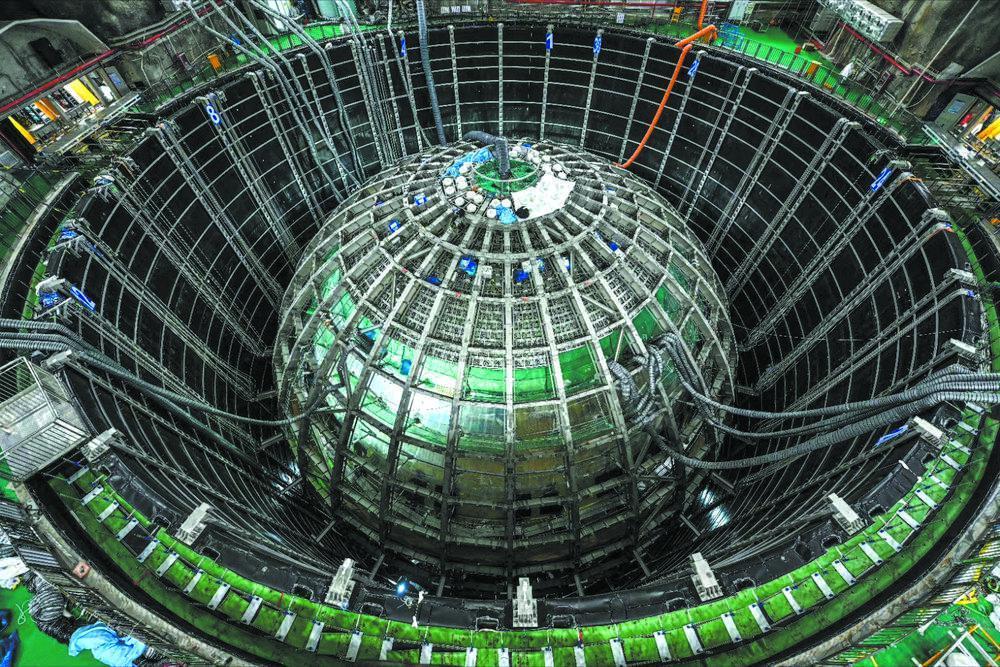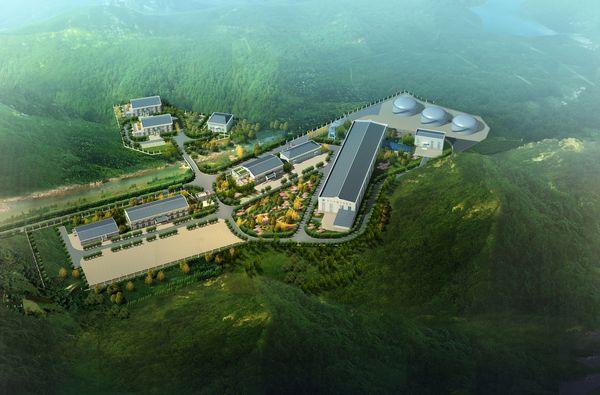Jiangmen, located in the Guangdong province of southern China, is making significant progress with its Jiangmen Underground Neutrino Observatory (JUNO), which is expected to be completed by the end of this year.

The JUNO detector system is scheduled to begin data collection next year, with hopes of becoming the first in the world to obtain crucial data on neutrinos. Additionally, the JUNO plans to construct a smaller independent detector in the nearby city, Taishan.
The JUNO leads the world in terms of its design, construction, and many other aspects. It will serve as a robust research platform for exploring cutting-edge scientific issues and making a breakthrough in key technologies.
According to the spokesperson of the JUNO, neutrinos are one of the fundamental particles that constitute the material world. Every time atomic nuclei come together (like in the sun) or break apart (like in a nuclear reactor), they produce neutrinos. "Neutrinos can be likened to probes for studying celestial bodies and the Earth's interior, playing a crucial role in disciplines such as particle physics, astrophysics, and cosmology."
Neutrinos travel at nearly the speed of light, are characterized by extremely low probabilities of interactions, and easily penetrate large amount of matter without being stopped. Consequently, despite their abundance, capturing neutrinos is extremely challenging. The study of neutrinos imposes high demands on the location, technology, and construction of the experimental apparatus.
Cao Jun, the Deputy Director of the Institute of High Energy Physics at the Chinese Academy of Sciences and the Executive Deputy Manager of the Jiangmen Underground Neutrino Observatory, recently stated that among similar neutrino observatories under construction worldwide, the JUNO will be the earliest to be completed and is the most likely to be the first to determine the mass hierarchy of the three types of neutrinos. Identifying the mass hierarchy will contribute to humanity's further understanding of the origin of the mass of neutrinos and the disappearance of antimatter in the universe. It will also chart a path for future experiments.
中国科学装置有望率先测得3种中微子质量顺序
位于中国南方的广东省江门开平的江门中微子实验装置,预计今年年底能基本完工。该装置明年开始运行取数,有望在全球率先测得关键数据。此外,江门中微子实验项目还将在附近的台山市建设一个独立的小型探测器。

据了解,江门中微子实验装置设计、建设等多个领域处于世界领先水平,将为世界探索前沿科学问题、攻克关键核心技术提供强有力的研究平台。
江门中微子实验室相关负责人介绍,中微子是构成物质世界最基本粒子中的一种,主要诞生于粒子物理或核物理过程。“中微子就好比研究天体和地球内部的探针,对于粒子物理、天体物理、宇宙学等学科研究具有重要作用。”
中微子能以接近光速的速度运动,只参与非常微弱的弱相互作用,且具有极强的穿透性。因此,中微子的数量虽然非常多,却极难捕获。研究中微子,对装置的位置、技术和建设水平等有着很高的要求。
中国科学院高能物理研究所副所长、江门中微子实验项目常务副经理曹俊日前表示,在世界上在建的同样类型中微子实验中,江门中微子实验将最早建成,也最有希望率先测得3种中微子的质量顺序。明确这个顺序,有助于人类进一步理解中微子的质量起源和解决宇宙反物质消失之谜,而且会决定后续实验的发展方向。
文 | 羊城晚报记者 陈卓栋 通讯员 江讯 谭耀广
翻译 | 刘佳慧









